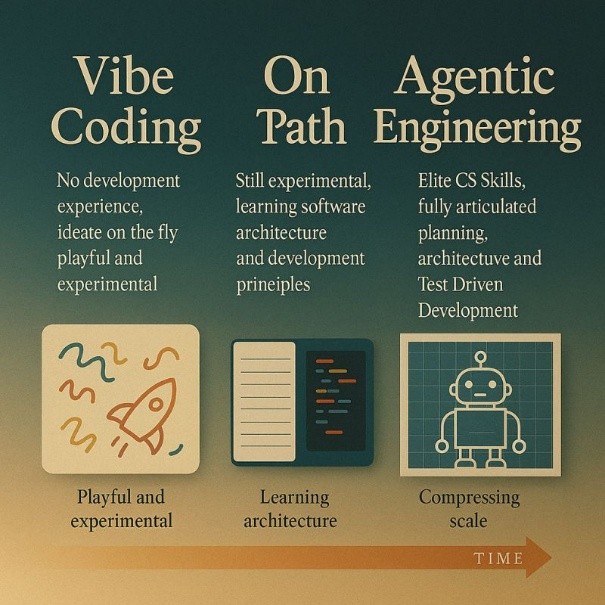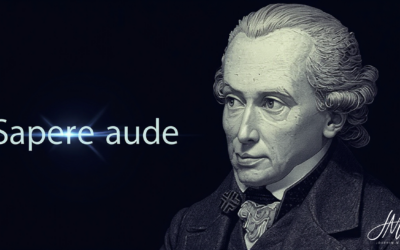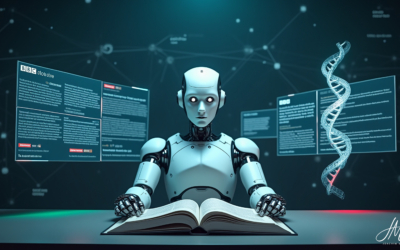In spring 2025, I successfully completed the Hugging Face Agents course and received the corresponding certificate. I developed an AI agent based on open-source technologies that ensures GDPR compliance and can be deployed as an on-premises solution. The agent uses Mistral-Large as its primary model and is equipped with EU AI Act-compliant open-source tools. An agent has twelve capabilities that are natively orchestrated to ensure that it can select the right tool for any GAIA-like task.
What a success, you might think. However, behind this success story lies an important insight that I would like to share with you: AI will not replace us, but rather complement those who understand how to utilize it properly.
My journey from “almost zero programming knowledge” to developing this working agent was marked by numerous challenges that underscore a crucial principle: technical expertise remains critical.
The vibe coding pitfall
Imagine being equipped with a state-of-the-art race car cockpit but having no experience driving vehicles. This is a typical example of the challenges many AI implementations face today. The problem begins with what is known in the industry as “vibe coding.”

[Image: Robert Ranson]
Vibe Coding, as shown in the image, is an approach that involves working experimentally based on quick ideas without any development experience. This may work for simple projects, such as prototypes or feasibility studies in development environments, as can be found in numerous tutorials and on YouTube. However, this approach quickly reaches its limits when it comes to more complex applications or in the context of a production environment.
As Brad Ross explains in his LinkedIn post – https://www.linkedin.com/posts/bradaross_agentics-agenticai-activity-7334230494756130816-pDk8?utm_source=share&utm_medium=member_desktop&rcm=ACoAAB7F0pEB09b4M1FuHNg8hQEVoVaC-orlXnU, which went viral, Agentic Engineering is not magic. Software fundamentals are essential for working with this software. Therefore, skipping them is not a shortcut. It is a high-performance framework designed specifically for professional users who have in-depth knowledge in this area.
From notebooks to real projects: the unbridgeable gap
A key problem I encountered was that I needed information on how to start a coding project that was MVP or production-ready. It shouldn’t just be a Jupyter or Colab notebook with individual code snippets that I could follow in the course.
In the early stages of my work, I was unaware of the importance of files such as README, requirements.txt, or app.py files. With Colab, the requirements are automatically available; in Jupyter they have to be loaded separately in the code, and in Hugging Face Space they are separate documents with their own names. Please note that the API keys can be found in the secrets in Colab and in the .env file in Jupyter.
These seemingly trivial differences pose massive hurdles for beginners. A basic understanding of project structures is essential for effective AI instruction.
The “boiling the ocean” moment
In my Hugging Face project and an internal project in which I wanted to develop an AI agent for all my LEAN and Six Sigma knowledge in a RAG (retrieval-augmented generation), I made a crucial mistake: I failed to deal sufficiently with the technical details and remained too superficial in my analysis. Although I specified which models and tools should be used (Ollama with Docker, Mistral, and Qdrant), I deliberately left key decisions such as the programming language (Python or TypeScript) open.
As my mentor Reuven Cohen put it: “You’re trying to solve the whole problem without establishing the necessary structure.”
The result: an agent that works in parts but does not deliver the desired results as a whole.
The Zen of Python as a guide
Several principles from Tim Peters’ “Zen of Python” have proven particularly valuable to me:
- “When faced with ambiguity, resist the temptation to guess.“
- ”If the implementation is hard to explain, it’s a bad idea.”
These principles are crucial for AI projects. AI systems require clarity and precision. If there are uncertainties about how they work, the AI amplifies them.
Choosing the right toolchain
Another challenge was selecting the right tools from a seemingly endless arsenal.
- Cursor, Lovable, Replit, Cline, RooCode – what are these tools, and how do you use them correctly?
- .clinerules files for concrete, verifiable specifications such as naming conventions or architecture rules
- Project structure:py, requirements.txt, README.md, and the correct organization of files and folders
The right toolchain is crucial, but without the proper understanding of how to use it, even the best equipment will lead to frustration. It’s not about simply using the latest tools, but understanding which tool is suitable for which purpose and how to use it effectively.
Best practices for code development with AI
In the context of developing AI-based systems, the PDCA cycle (Plan, Do, Check, Act) has proven to be an extremely effective method.
- Plan: Divide your coding project into several phases and subtasks
- Do: Work on each code subtask separately
- Check: Test each section of code with tests (TDD) and debugging
- Act: After each successful test, update your checklists and documentation, perform code cleanups, and save your progress in version control
A critical point when working with AI code generators: Never let the AI run without human control. You need to check what it is doing and guide it. Otherwise, there is a possibility that it will start to overdevelop. Instead, it should implement a better prompt engineering strategy rather than introducing complex post-processing steps.
The role of the subject matter expert in the AI era
My experience clearly shows that AI systems require active guidance from experts. The idea that a person only needs to give commands to AI for it to perform all tasks correctly is a dangerous myth.
In my case, despite detailed super prompts with project files and clinerules files, I was unable to generate fully functional code. Through careful debugging analysis and step-by-step investigation, I was able to identify the sources of error and understand the reasons for the lack of functionality of certain approaches.
Summary
The AI revolution is a real development, but it does not replace expertise; rather, it enhances it. Just as a Ferrari reaches its full potential in the hands of an experienced driver, AI can work wonders in the hands of subject matter experts. As Brad Ross rightly points out, agentic engineering is a demanding task that requires experience.
For companies, this means that it is advisable to invest not only in AI tools but also in employee training. Your teams must understand the necessary fundamentals before embarking on complex AI implementations.
The successful use of AI in companies requires solid knowledge, a structured approach, and a deep understanding of both the technology and the domain. Only then can we tap into the true potential of this revolutionary technology.






